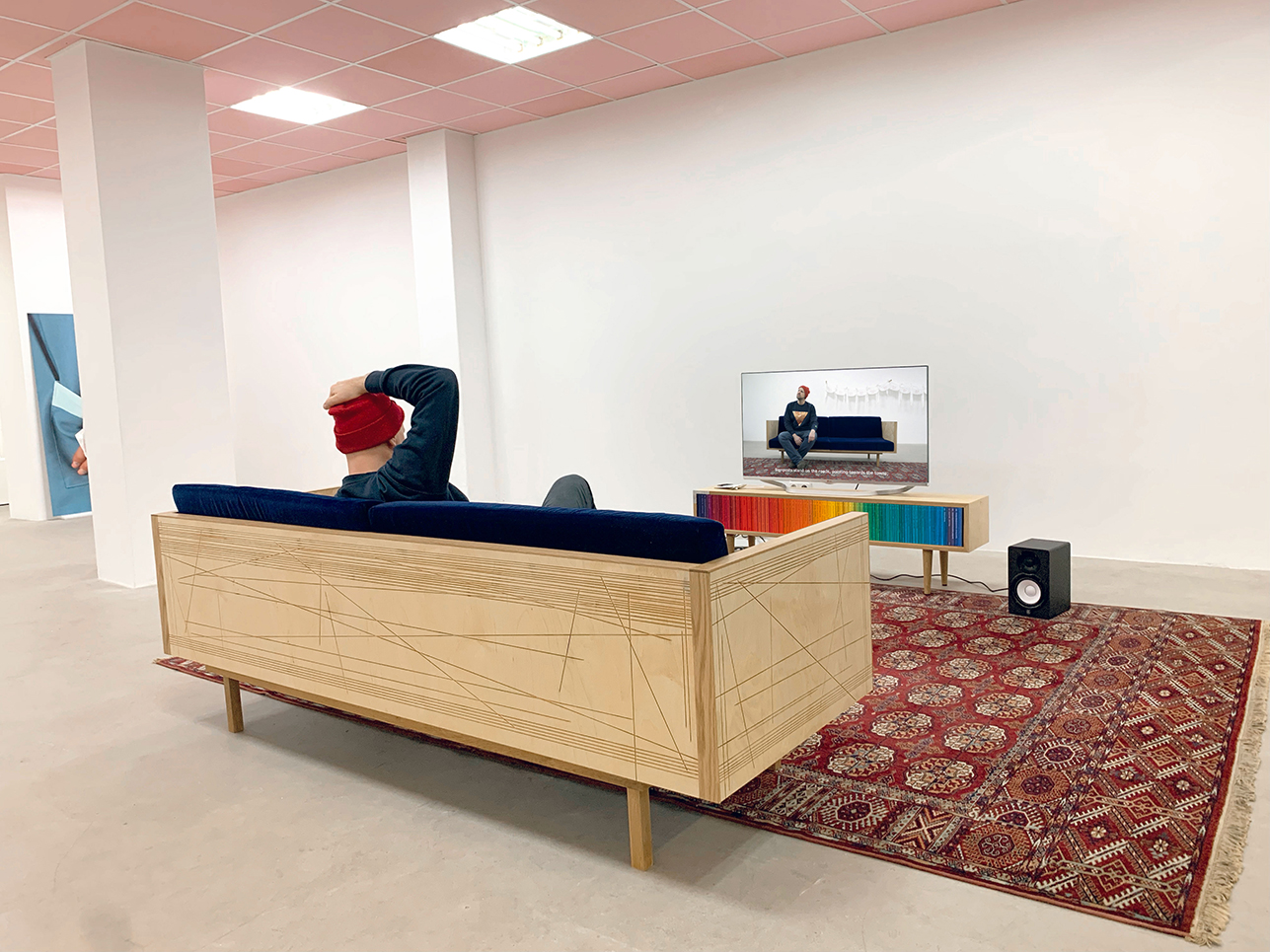
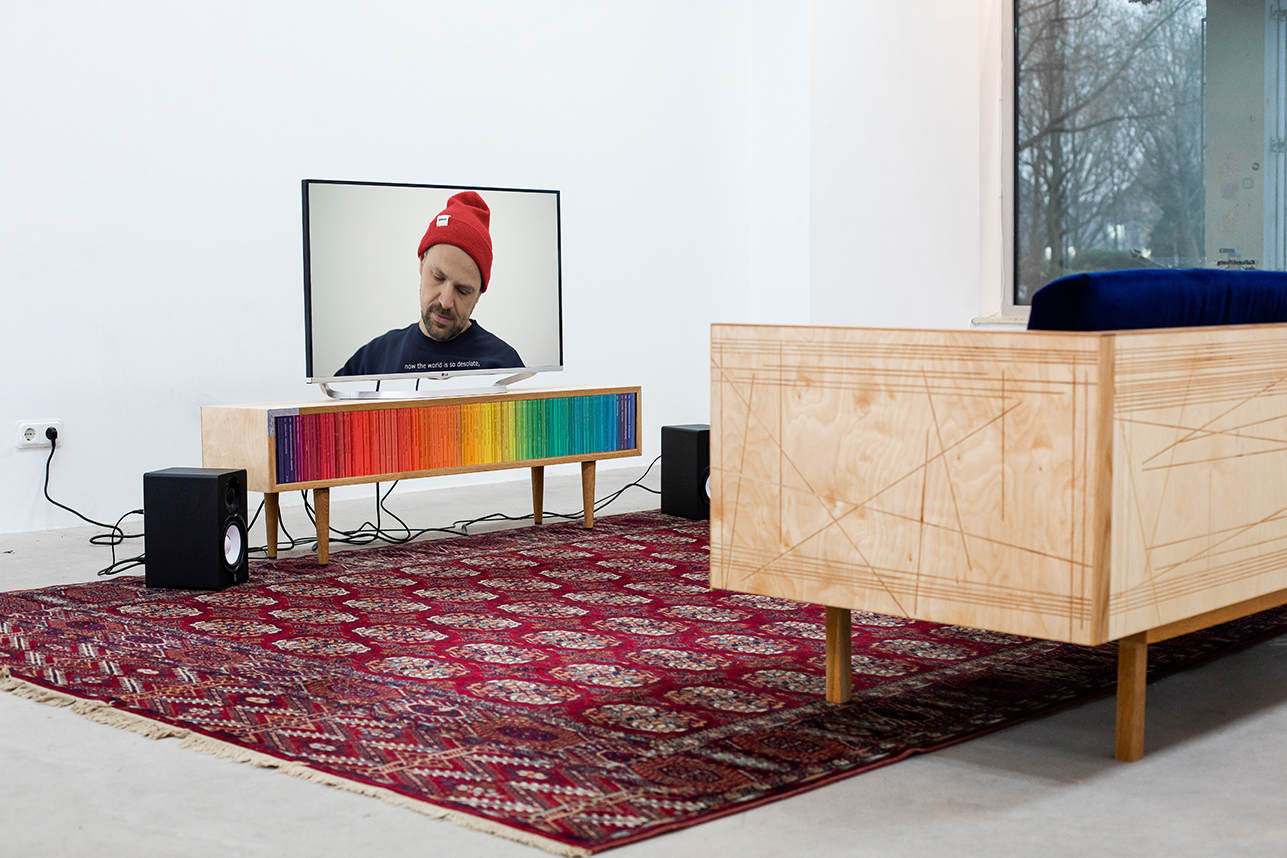
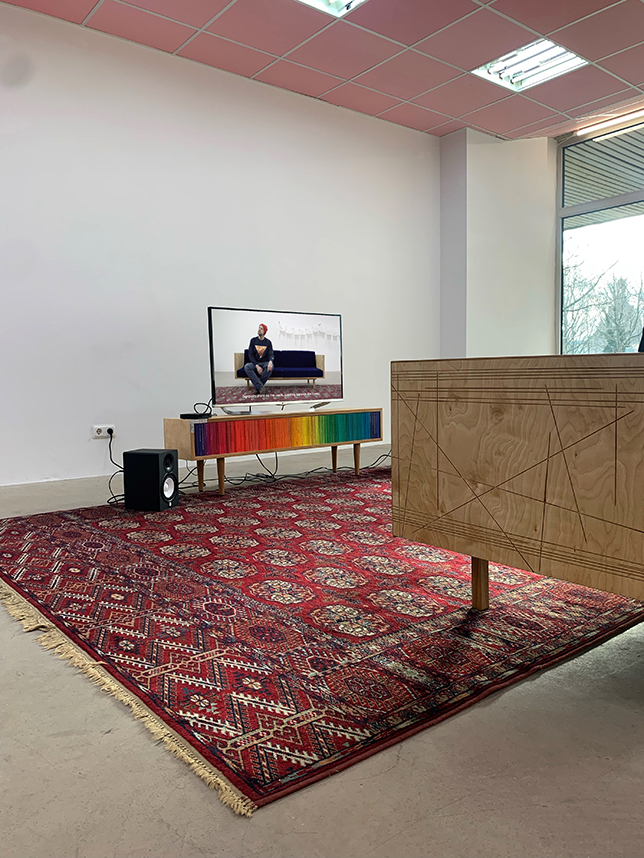
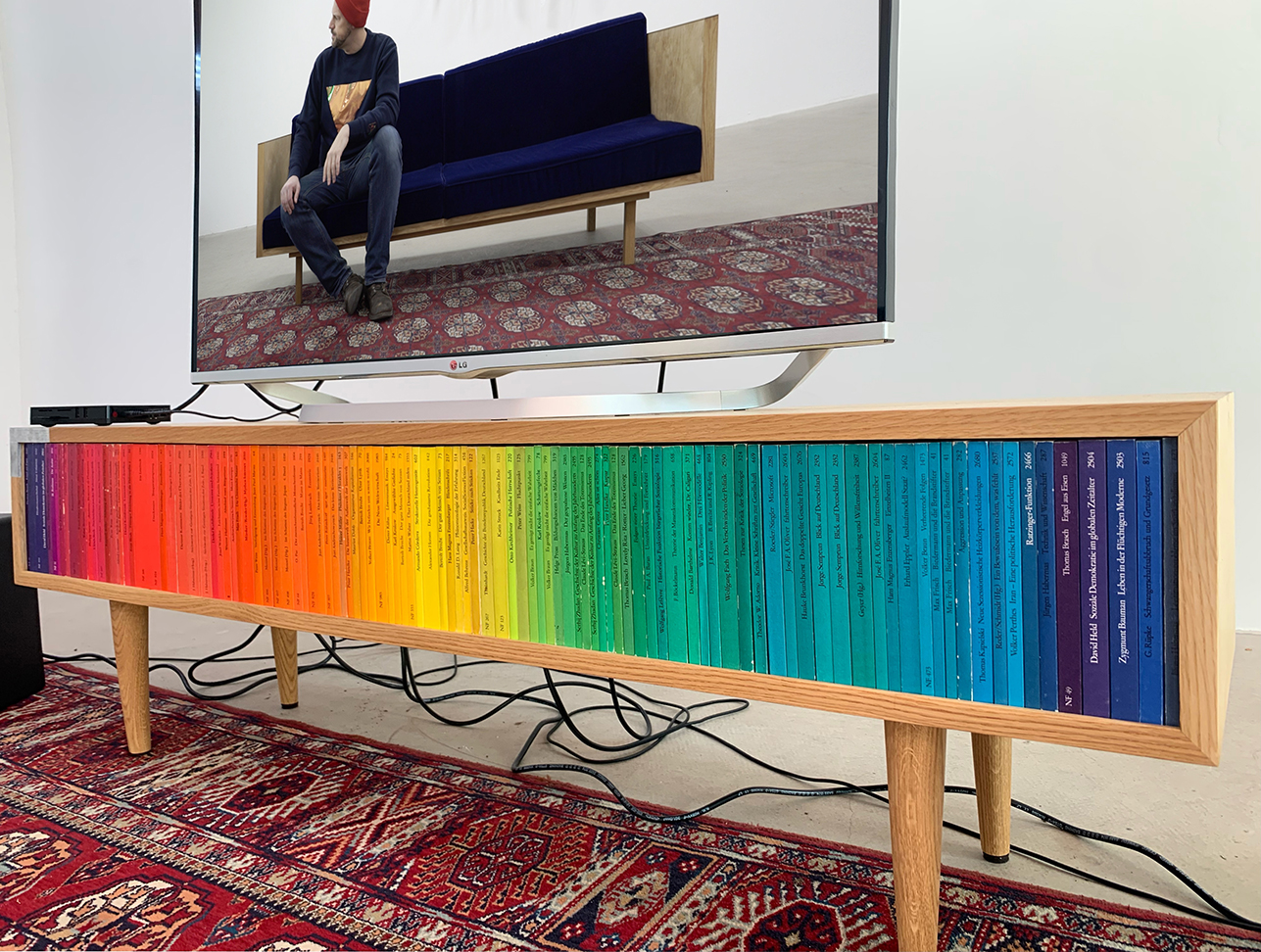
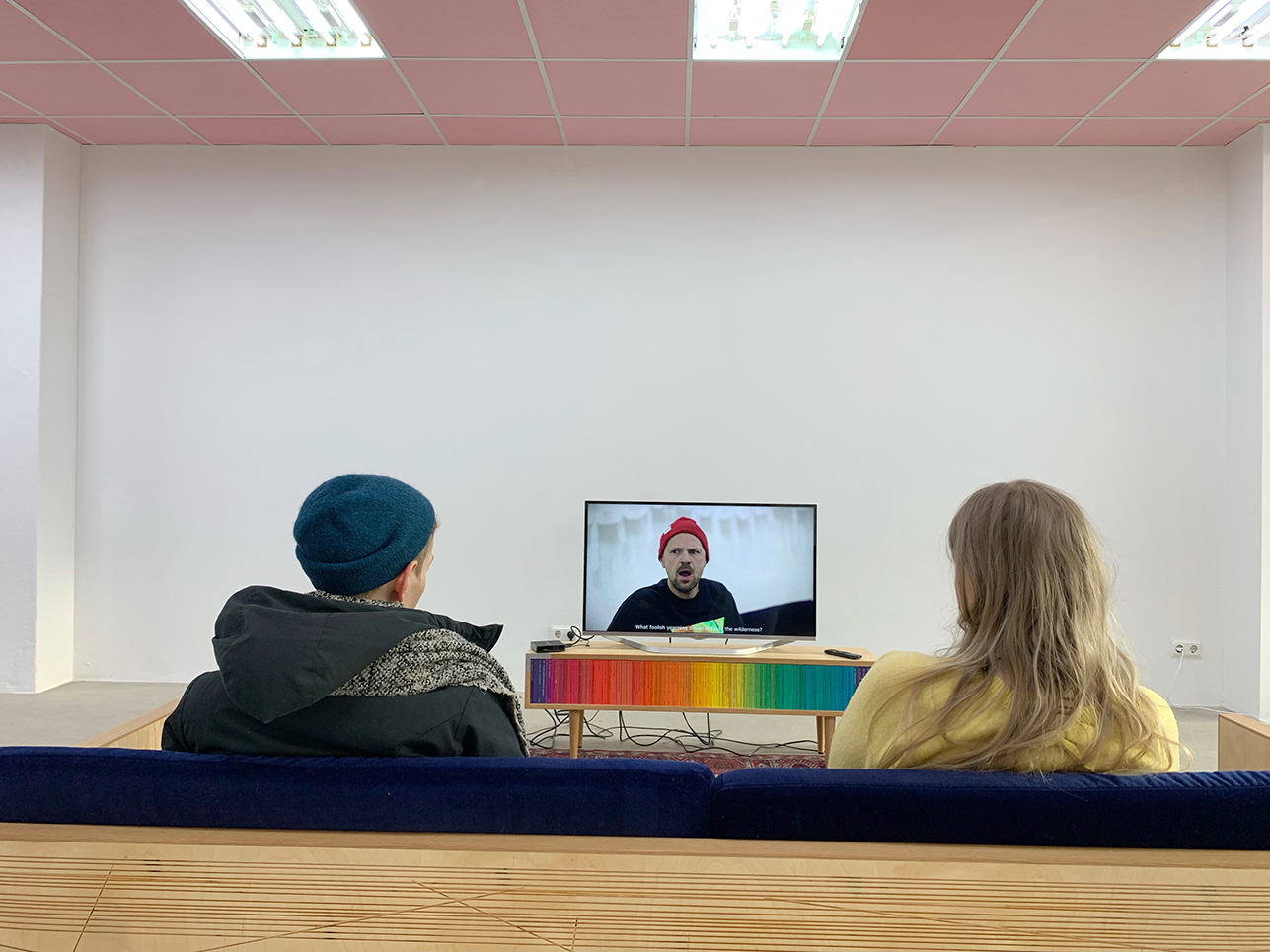
M.B.Z. (Mein Berliner Zimmer)
2022
Couch_ Carpet_ Dresser_ TV_ Loudspeaker_ Sound_ 1-Channel HD Video Projection_ 2-channel sound_ 20 min_ 350 x 300 x 120 cm
Galerie Stephanie Kelly, Dresden
The room-sized installation „M.B.Z. (My Berlin Room)“ takes up the point of the situatedness and order of human spaces of action, work and life by restaging in the gallery a type of space characteristic of Berlin: the so-called „Berlin Room“, a polyvalent spatial joint that is classic for architecturally coalesced residential complexes in old buildings and which, as a corner and passage room, is both an interface and a passage. On it are a couch and a TV set, as well as borrowings from conventional furnishing utensils that could come from various living contexts. The TV shows a video of an opera singer. He is dressed in a dark blue jumper with an inverted, pearly and iridescent triangle on it. The singer represents a kind of alter ego of the artist. In his representative function, he sings excerpts from Franz Schubert’s song cycle „Die Winterreise“ from 1827 with texts by Wilhelm Müller. The songs set to music on the screen are dynamically interrupted by other videos, for example shots of a boat on the high seas or cat videos. The profane escape from everyday life through the consumption of cat content that is widespread in social media reels and YouTube videos is thus opposed to a symbol of escape movements and sea rescue. This makes it clear what „Die Winterreise“ also alludes to: Winter as a metaphor for reactionary restoration efforts is contrasted with the journey into spring, into the awakening against the ruling class. This interpretation of the song thus also politicises Müller’s words, which contrasts with the literary-historical description of Müller as an indulgent romantic. This dualism builds a bridge to the calming of Western public spirit through cat videos, which Wellner visually throws against the worldwide movements of flight and migration, swelling precarious living situations and the deepening social divide, inhumane global working conditions and difficult income relationships.Historically, the „Berlin Room“ is also a hinge between the „lower“ and the „upper“, which until into the 20th century connected the servants and the servants with each other. Thus, in Wellner’s work, the „Berlin room“ serves as a metaphor for a transit space that symbolises the change of belonging to a social class, income group or qualification level to a higher social group, stratum or class, combined with higher social status, in short, the so-called „ascent“. The stage element on the ground speaks not only of the arduousness inherent in this endeavour, but also of the impossibility of overcoming this barrier that moves around itself – even if concepts like the „American Dream“ or educational equity myths would have us believe otherwise. Statistical surveys on access to academia, for example, already show a different picture with regard to the doctoral rates of non-academic children. This shows the systematics of elite strata to be hermetic and emphasises the insistence on borders as constituting society in the Western world.
Michael Klipphahn (Curator of the exhibition)
Click the link to see the video:
M.B.Z. on vimeo
